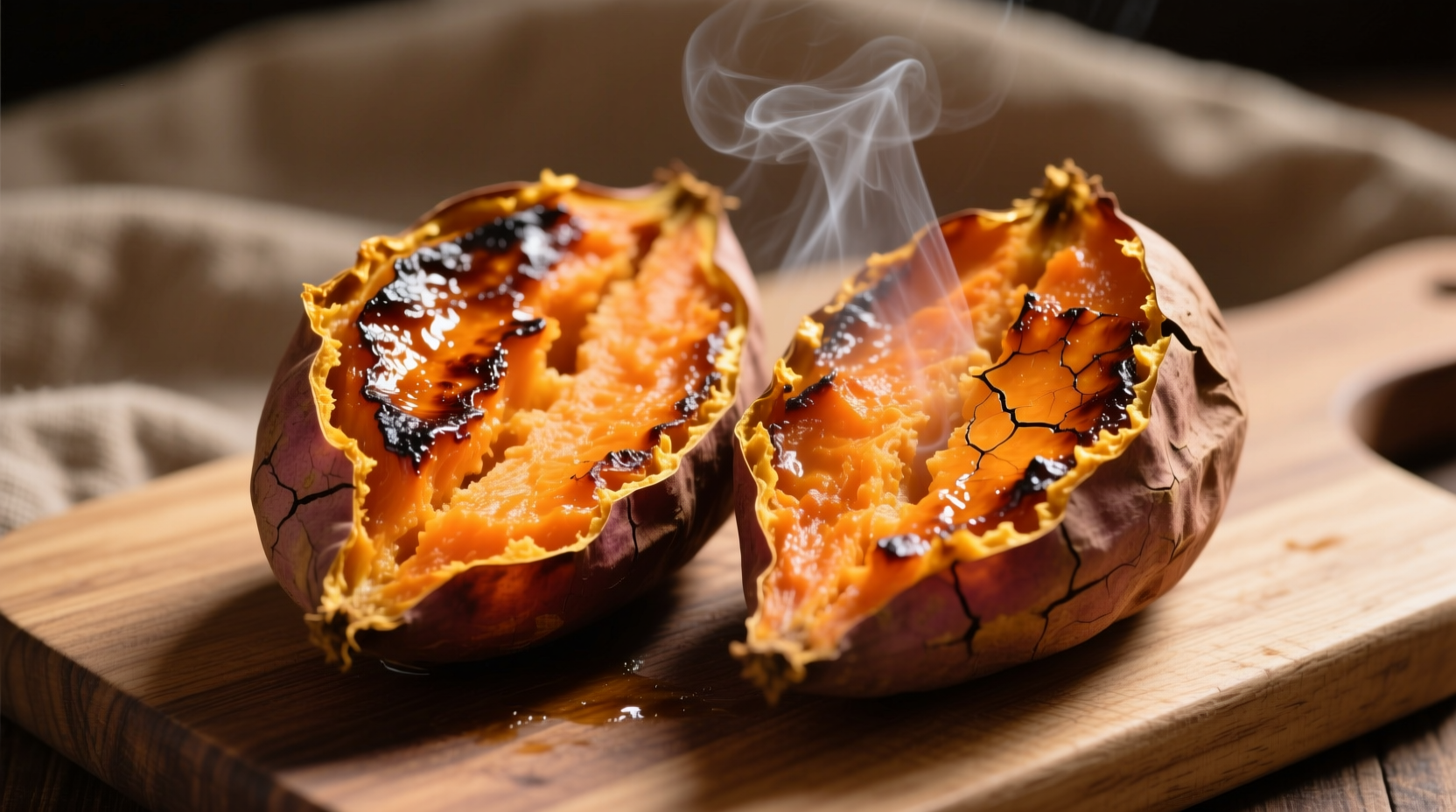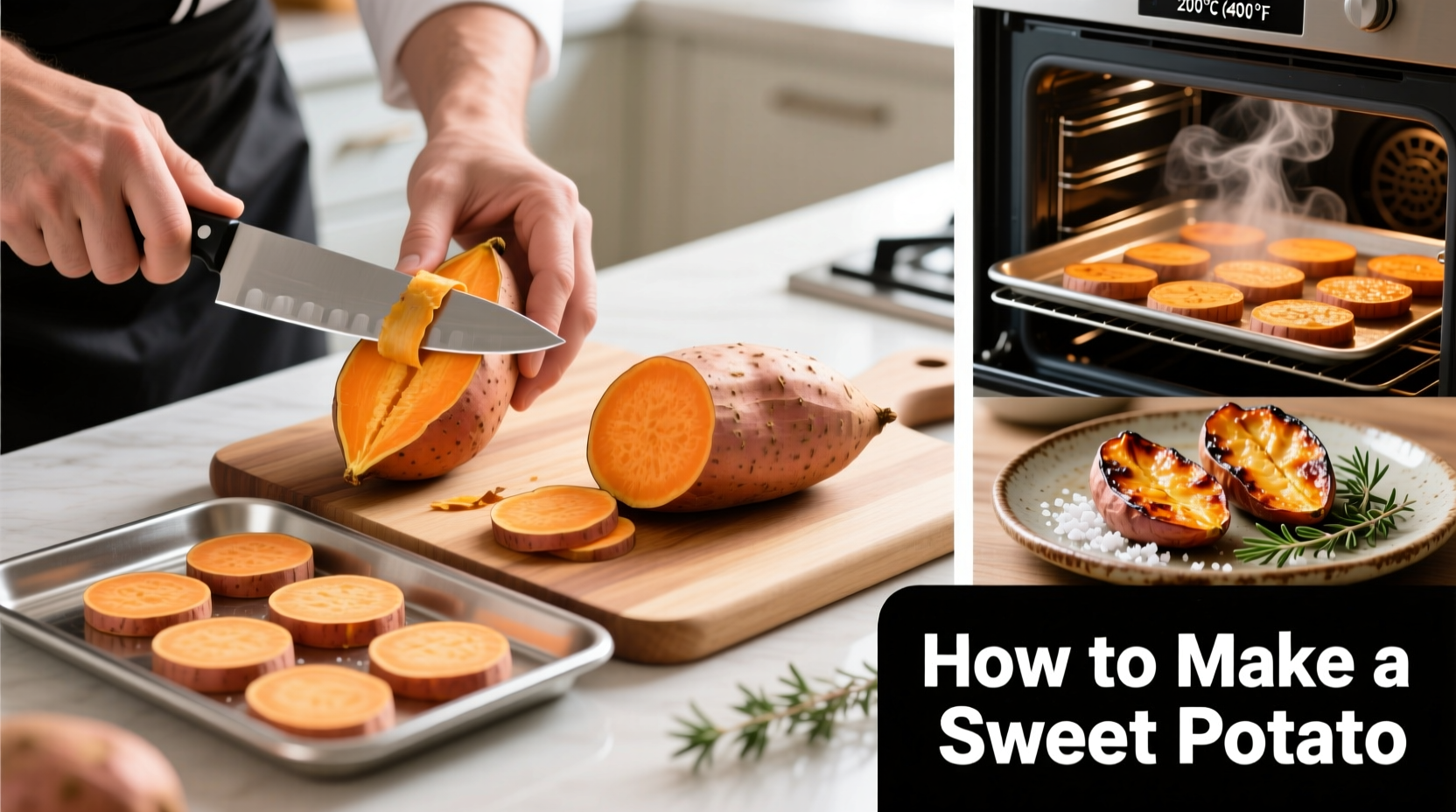Discover exactly how to transform raw sweet potatoes into tender, flavorful dishes using professional techniques anyone can master. Whether you're a beginner cook or looking to refine your skills, this comprehensive guide covers everything from selecting the best varieties to avoiding common preparation mistakes—all backed by culinary science and food safety standards.
Understanding Sweet Potato Varieties and Selection
Not all sweet potatoes are created equal. The orange-fleshed varieties (like Beauregard and Jewel) contain high beta-carotene levels, while purple varieties (Okinawan) offer anthocyanins. White-fleshed types have a milder flavor profile. When selecting sweet potatoes:
- Choose firm specimens without soft spots or cracks
- Look for tapered shapes which cook more evenly
- Store at room temperature (never refrigerate) for optimal texture
According to USDA agricultural research, sweet potatoes maintain best quality for 3-5 weeks when stored in a cool, dark place with good ventilation—never in plastic bags which accelerate spoilage.

Essential Preparation Techniques
Proper preparation makes the difference between mediocre and exceptional sweet potatoes. Follow these science-backed steps before cooking:
- Washing: Use a vegetable brush under cool running water to remove dirt (sweet potatoes grow underground)
- Drying: Pat thoroughly dry—moisture prevents proper browning during roasting
- Piercing: For whole cooking methods, pierce 4-5 times with a fork to allow steam escape
- Oil application: For roasting, toss with 1 tsp oil per potato—enough to promote browning but not create greasiness
Four Foolproof Cooking Methods Compared
| Cooking Method | Time Required | Texture Result | Best For |
|---|---|---|---|
| Oven Baking (400°F) | 45-60 minutes | Caramelized exterior, creamy interior | Whole sweet potatoes, meal prep |
| Boiling | 20-30 minutes | Uniformly soft | Mashing, baby food |
| Micro waving | 5-12 minutes | Moist, steamed texture | Quick single servings |
| Air Frying (380°F) | 25-35 minutes | Crispy outside, tender inside | Sweet potato fries, smaller portions |
Mastering Oven Baking: The Flavor-Enhancing Method
Baking transforms sweet potatoes through caramelization, developing complex flavors. Follow this professional technique:
- Preheat oven to 400°F (204°C) with rack in center position
- Place sweet potatoes directly on oven rack (put foil on lower rack to catch drips)
- Cook 45-60 minutes depending on size (20-25 minutes per pound)
- Test doneness by inserting fork—should slide in with no resistance
- Rest 5 minutes before serving to allow starches to set
Food science insight: Baking at 400°F triggers the Maillard reaction and caramelization of natural sugars, creating over 50 flavor compounds according to research published in the Journal of Agricultural and Food Chemistry. This explains why baked sweet potatoes taste significantly sweeter than boiled versions.
Avoiding Common Sweet Potato Mistakes
Even experienced cooks make these errors that compromise results:
- Refrigerating raw sweet potatoes: Causes hard centers and off-flavors (per FDA storage guidelines)
- Overcrowding during roasting: Creates steam instead of caramelization—leave 1 inch between potatoes
- Peeling before cooking: Removes fiber-rich nutrients and increases cooking time
- Underseasoning: Sweet potatoes need proper seasoning—try ¼ tsp salt per medium potato
Flavor Pairing Science
Maximize your sweet potato experience with these scientifically-backed combinations:
- Salt enhancement: A pinch of salt actually heightens perceived sweetness through sensory contrast
- Fat pairing: Healthy fats like olive oil or coconut milk increase absorption of fat-soluble vitamins
- Acid balance: A squeeze of lime or orange juice cuts richness and brightens flavor
- Spice synergy: Cinnamon, nutmeg, and ginger share aromatic compounds that complement sweet potato's natural profile
Nutrition research from Harvard T.H. Chan School of Public Health confirms that combining sweet potatoes with healthy fats increases absorption of beta-carotene by up to 50% compared to eating them plain.
Nutritional Comparison of Cooking Methods
All cooking methods preserve sweet potatoes' impressive nutrient profile, but with subtle differences:
- Baking: Highest antioxidant retention (particularly beta-carotene)
- Boiling: Slightly reduces glycemic index, better for blood sugar management
- Steaming: Best preserves water-soluble vitamins like vitamin C
- Microwaving: Fastest method with minimal nutrient loss due to short cooking time
A medium sweet potato (130g) provides 103 calories, 27g carbohydrates, 4g fiber, and an astonishing 438% of your daily vitamin A needs according to USDA FoodData Central.
Storage and Reheating Guidelines
Proper storage maintains quality and food safety:
- Cool completely before storing (within 2 hours of cooking)
- Refrigerate in airtight container for 3-5 days
- Freeze for up to 12 months (best when mashed with small amount of liquid)
- Reheat in oven at 350°F for best texture retention
Follow FDA food safety guidelines: never leave cooked sweet potatoes at room temperature for more than 2 hours to prevent bacterial growth.
FAQ: Sweet Potato Preparation Questions Answered
Can you eat sweet potato skin?
Yes, sweet potato skins are completely edible and packed with fiber and nutrients. Just ensure thorough washing before cooking. Baking with skin on actually helps retain moisture and nutrients during cooking.
Why do my sweet potatoes remain hard after cooking?
Hard centers usually occur from undercooking or cooking at too low temperature. Ensure oven is properly preheated to 400°F and cook until fork-tender. Larger sweet potatoes may need 10-15 additional minutes. Avoid refrigerating raw sweet potatoes before cooking, as this causes hard centers.
How do you prevent sweet potatoes from drying out when baking?
To maintain moisture, avoid overcooking and don't skip the resting period. For extra insurance, wrap in foil during the last 15 minutes of baking. Never store cooked sweet potatoes without proper airtight containment, which leads to moisture loss.
What's the healthiest way to cook sweet potatoes?
Boiling preserves the most antioxidants according to research in the Journal of Agricultural and Food Chemistry, while baking develops the most complex flavors. All cooking methods significantly increase the bioavailability of beta-carotene compared to raw consumption.
Can you cook sweet potatoes in advance for meal prep?
Absolutely. Bake or boil sweet potatoes, then store in airtight containers for 3-5 days. They're perfect for meal prep—add to salads, grain bowls, or reheat as a side. For best results, reheat in oven rather than microwave to maintain texture.











 浙公网安备
33010002000092号
浙公网安备
33010002000092号 浙B2-20120091-4
浙B2-20120091-4